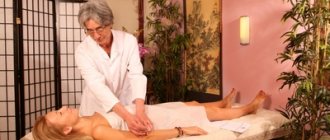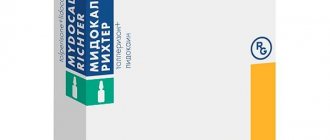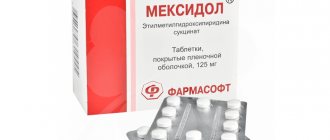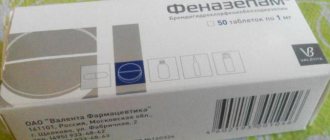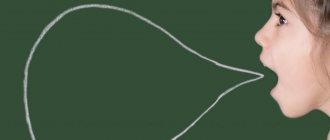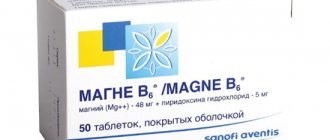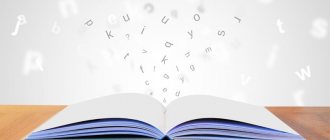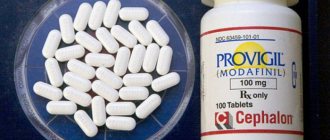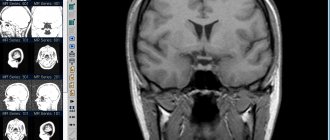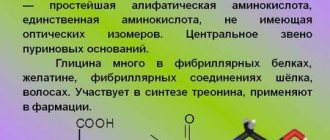Features of the method
Through microcurrent reflexology, the muscle tone of the articulatory apparatus returns to normal, due to which the brain cortex, which is responsible for understanding human speech, is activated. A person also has the ability to reproduce verbal forms.
This method is relevant when the child reaches six months of age. Earlier use does not have the desired effect, since the skin has not yet formed.
What is the difference
Microcurrent reflexology differs markedly from acupuncture. In comparison with the “classical” method, in this case the specialist has the opportunity to influence the information regulatory processes of the human body in a dosed manner. This is explained by the physiological adequacy of the electric current in relation to irritation of nerve structures.
Advantages
Modern doctors note a large number of advantages of microcurrent reflexology, which allows them to prefer it to acupuncture. So, they distinguish:
- Absence of pain factor (relevant for young patients with neurological disease).
- The ability to influence an unlimited number of acupuncture points.
- Possibility of activation of speech zones of the brain.
- Possibility of reducing muscle tone of the articulation apparatus.
- Recording of indicators, thanks to which the doctor has the opportunity to monitor the progress of therapy.
Who is MTRT indicated for?
The range of applications of microcurrent reflexology is quite wide. It has virtually no age restrictions and can be used in adults and children over 6 months. And some specialists use this method to treat infants from 2 months of age.
MTRT can be included in a rehabilitation program for the following conditions:
- Cerebral palsy – all main forms of the disease (with spastic paralysis of the limbs, diplegia, hyperkinesis, atonic-astatic syndrome, psycho-speech defects);
- consequences of perinatal pathology of the central nervous system with hypertensive-hydrocephalic syndrome, delayed psycho-speech and motor development, muscular dystonia syndrome;
- open form of hydrocephalus;
- consequences of natal injury to the cervical spine with various motor and sensory disorders at the spinal level;
- condition after suffering brain and spinal cord injuries, neuroinfections and post-vaccination complications;
- delayed psychomotor development of a child caused by phenylketonuria, Down syndrome and other genetic diseases;
- alalia, ZRR, STDs of various origins and severity;
- autistic syndrome;
- hyperexcitability and attention deficit syndrome;
- neurotic disorders with various symptoms;
- sensorineural hearing loss, partial atrophy of the optic nerve;
- enuresis;
- specific disorders in the formation of learning skills, which is most often associated with dysfunction of certain areas of the cerebral cortex and can manifest itself as dysgraphia, dyscalculia, dyslexia;
- recovery period after severe injuries, including sports ones.
What is the reason for mental and speech development
The answer to the burning question “when should a child start talking” is quite simple: according to experts, at the age of one, a person should pronounce about ten light words. By the age of five, a child’s vocabulary should be at least three thousand words.
If parents notice that their child’s speech development is not normal, they should seek professional help.
Three factors
Developmental delays in a child may occur due to:
- increased intracranial pressure (a child at risk may develop mental retardation);
- trauma caused by difficult childbirth;
- perinatal pathology of the central nervous system.
How to help
Only an experienced specialist can help a child. From the age of two, you can show your child to a defectologist. Thanks to the classes, the baby will develop not only speech, but also attention, as well as memory.
As soon as the child reaches four years of age, speech therapy classes should begin. To improve diction, the specialist performs a special massage. It is also important to consult a neurologist who will determine a treatment strategy for the underlying disease.
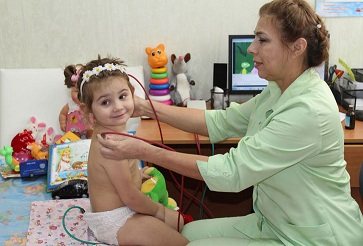
In modern conditions, the help of a reflexologist is invaluable. Using the method of microcurrent reflexology, the specialist provokes the activation of speech zones. Thanks to this, the speech development of the young patient is quickly restored.
Transcutaneous microcurrent reflexology
History of the method
Reflexology has been known to mankind since ancient times and is a heritage of Chinese traditional medicine. Chinese healers did not treat a specific organ, but sought to heal the body as a whole, restoring the correct flow of vital energy “qi” in the body. They influenced biologically active points with needles, cigars, plant grains, coins, etc. Thus, over the centuries it has been possible to successfully relieve pain attacks, inflammation, and spasms.
Important!
The impact on biologically active points is scientifically substantiated today. The skin and nervous system have a common origin. In utero they develop simultaneously from one germ layer. The skin is densely dotted with the endings of nerve fibers and their plexuses. By influencing nerve receptors on the surface of the skin, the brain can be stimulated. And the brain controls all processes and systems of the body. Thus, almost any disease can be treated with reflexology.
In the last years of the last century, the scientific community showed increased interest in reflexology methods. The knowledge accumulated by centuries of practice was generalized and systematized. Today, hardware methods have replaced the previous methods. The needles replaced microcurrents, similar to natural brain impulses.
At the Indigo Children Research Institute, microcurrent reflexology can be prescribed with the use of medications. Microcurrents promote deeper penetration of healing substances without loss and help to significantly reduce the dosage. Excellent results in the treatment of pediatric neurological pathology can be achieved by using transcutaneous microcurrent reflexology in combination with the unique Alloplant biomaterial.
Read reviews
The treatment is worth it! My daughter had poor motor activity and emotional instability. We completed a course of bobat therapy and transdermal microcurrent reflexology. Arina has become more emotionally stable, and her motor activity has improved.
Read the full review >>
INDICATIONS FOR PRESCRIPTION of percutaneous microcurrent reflexology:
Transcutaneous microcurrent reflexology can be prescribed as an independent treatment or as part of a comprehensive program. Percutaneous reflexology has proven itself in the treatment of the following diseases:
- Delayed speech development
- Delayed motor development
- mental retardation
- cerebral palsy
- Epilepsy
- Hydrocephalus
- Hyperactivity
- Autism
As a result of treatment with transcutaneous microcurrent reflexology:
- hysterical manifestations are eliminated;
- excitability and aggression decreases;
- memory and attention improves;
- headaches are eliminated;
- sleep improves;
- spasms are relieved and the volume of motor activity is replenished, new motor skills are developed;
- CSF production is normalized.
Conducting percutaneous microcurrent reflexology for schoolchildren can significantly improve academic performance.
Contraindications
Microcurrent reflexology is strictly contraindicated in the presence of chronic and somatic pathologies.
This method of treatment should also be abandoned if a person is diagnosed with cancer or an acute infectious disease.
Rate this article:
(votes: 1 , average: 5.00 out of 5)
Loading...
Related posts:
- Main types, indications and contraindications of reflexology for osteochondrosis
- Features and basic exercises of reflexology at home
- Main contraindications and features of reflexology for children
How is the procedure performed?
Before starting microcurrent reflexology, it is advisable to conduct an electroencephalography (EEG). In our clinic, this procedure is used to treat children from 2 months. A course of microcurrent reflexology precedes drug therapy.
Microcurrent reflexology for children will be more effective if combined with other wellness procedures. The most useful are:
• general massage; • drug therapy; • exercise therapy; • speech therapy massage.
Microcurrent reflexology is not performed together with electromagnetic physiotherapy.
The treatment course lasts 3 weeks, during which 15 procedures are prescribed. For a more pronounced therapeutic effect and maintaining positive dynamics, repeated courses are recommended. The treatment regimen for each patient is drawn up purely individually, taking into account the current condition and diagnostic results.
What is important to understand when performing MTRT
Microcurrent reflexology is not a potent treatment and is not usually used as monotherapy. And you shouldn’t expect a miraculous and quick effect from several sessions. To achieve a clinically significant lasting effect, at least 3–5 comprehensive rehabilitation courses are usually required.
In addition, MTRT cannot replace drugs with nootropic, neurotrophic, muscle relaxant, anxiolytic, anticonvulsant, diuretic and other effects prescribed by a neurologist. The use of such drugs is not a contraindication for rehabilitation. But at the time of starting reflexology, the patient must be on an individually selected maintenance therapy regimen. A clinically significant deterioration in the patient’s condition or the appearance of new symptoms during the rehabilitation course is grounds for repeated consultation with the attending physician.
So, microcurrent reflexology is a modern and continuing to develop method of rehabilitation of patients with a variety of neuropsychic disorders.
STC "Reatsentr", a specialist talks about the effects of microcurrent reflexology:
What is reflexology based on?
The effectiveness of reflexology is due to the fact that biologically active points have special properties:
- increased sensitivity to external influences;
- significantly more active blood and lymph circulation;
- increased oxygen uptake.
Reflexology techniques appeared in ancient China, but are only gaining popularity in many countries. In Russia, non-standard medicine began to be practiced back in the 1960s, and its active development began quite recently - in the early 1990s.
Make an appointment with a reflexologist in Novosibirsk at the Pasman Clinic. Doctors will select effective treatment for you based on a combination of reflexology techniques. During the consultation, the reflexologist will determine 6-8 of them that are most suitable for you.
You can make an appointment by phone or using the form on the website.
